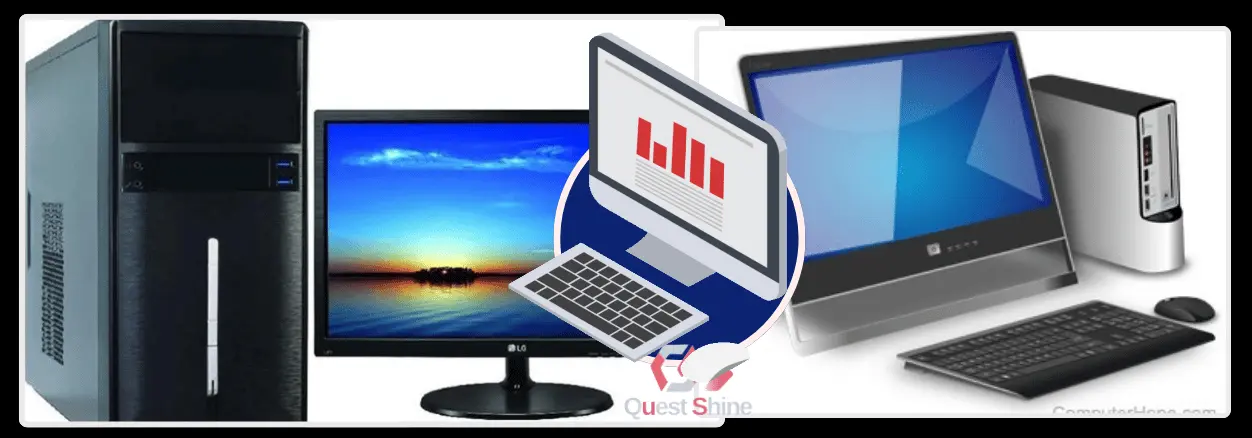Virtually all people have a Desktop Computer reception, whether for work, play, or both. Work applications and games are constantly being updated to administer us more speed, efficiency, and, within games, better graphics, and gaming experience. There’s an infinite relationship between hardware and software, one pushing the opposite in an endless cycle. The higher the hardware, the more programmers will make the most of this performance to feature more capabilities to their software. The more resources the software requires, the more hardware manufacturers develop their technology.
As with the acquisition of any device, we’ve to contemplate several criteria that may help us filter the selection.
The first question that arises is: what entirely use are you visiting give the Desktop Computer? Is it for work? Games? Streaming?
Even so, and despite helping with filtering, it’s necessary to deepen the requirement for the Desktop Computer. If it’s for work, graphic design, and video editing, it requires a machine quite different from someone who works mainly with Excel spreadsheets or writing in Word. So this is often our first tip.
Goal
What use are you visiting make of the machine? Does one want to play any game with an excellent fps rate? Does one simply need a machine to figure in Excel, Word, Powerpoint, handle emails, and surf the internet? After answering this question, we enter another phase of filtering. That is, we deepen this criterion.
Budget
This filter is often switched with the primary one. If we wish for a gaming machine with great fps rates, the budget will automatically match this requirement. If we only need a Desktop Computer to figure out with undemanding tools in component performance, the budget will be more conservative.
Buy Assembled Desktop Computer or Components and Assemble at Home?
Here, it depends plenty on each user. Many folks opt to buy the varied components and assemble our machine reception. We wish that specific box, the processor we’ve determined is best for us, the major cost-effective graphics card, etc.
On the opposite hand, there are excellent deals we will find on pre-assembled machines and that they are generally cheaper than buying all the components separately. But there are more advantages.
If you have ever experienced a catastrophic failure or want to switch an aging drive, buying a replacement computer is often a dizzying experience. With countless manufacturers, models, and options to decide on from, it is simple to experience information overload. As you start your exploration for new technology, consider the key elements you ought to be searching for during a new microcomputer.
Processor
A computer’s processor is usually brought up as its brain, and the CNET technology website says that this component is the most significant piece of a personal desktop computer system. you’ll be able to distinguish processors by considering the number of cores that must process data. “Consumer Reports” says a dual-core processor is okay if you use your computer to test email and perform basic tasks.
Still, you must consider a quad-core if you are going to observe videos on your microcomputer. Buy a machine with a six-core processor if you would like high performance for graphics-intensive video games or commit to editing high-definition video. Among other sources, CNET’s Desktop Buying Guide details an summary of a number of the highest processors currently available on the market.
Memory
The amount of memory your desktop computer has also played a key role in how well it performs. Machines use memory to store data temporarily. “Consumer Reports” suggests you study systems with 3 to 4 GB of memory, noting that “more than that’s probably not beneficial unless you propose to run multiple memory-intensive applications at the identical time and use one system 64-bit software package.” Memory in new workspaces as of the date of publication usually comes in formats referred to as DDR2 and DDR3. The latter is quicker and more energy-efficient, consistent with CNET.
video cards
Desktop computers include built-in or discrete video capabilities to display your computer’s output on a screen. Integrated video is slower and uses a number of your computer’s memory, which isn’t a big deal if you email, surf the web, or watch web-based videos. If you are a hard-core gamer or want to use over two monitors, you need to choose an avid graphics card. Users who play 3-D video games should get a card with 512MB to 1GB of video memory.
Hard disk
A hard drive provides cupboard space for your documents, photos, videos, and other data. When choosing one for your Desktop Computer, you wish to think about speed and size. “Consumer Reports” recommends a rate of seven,200 revolutions per minute (RPM) for desktop hard drives. The faster a drive spins, the quicker you’ll be able to access its content. A formidable drive size of 500GB should be adequate for many users, in keeping with CNET. Since disc drive failure may be a common problem, especially as computer ages, consider purchasing an external drive to duplicate your data.





